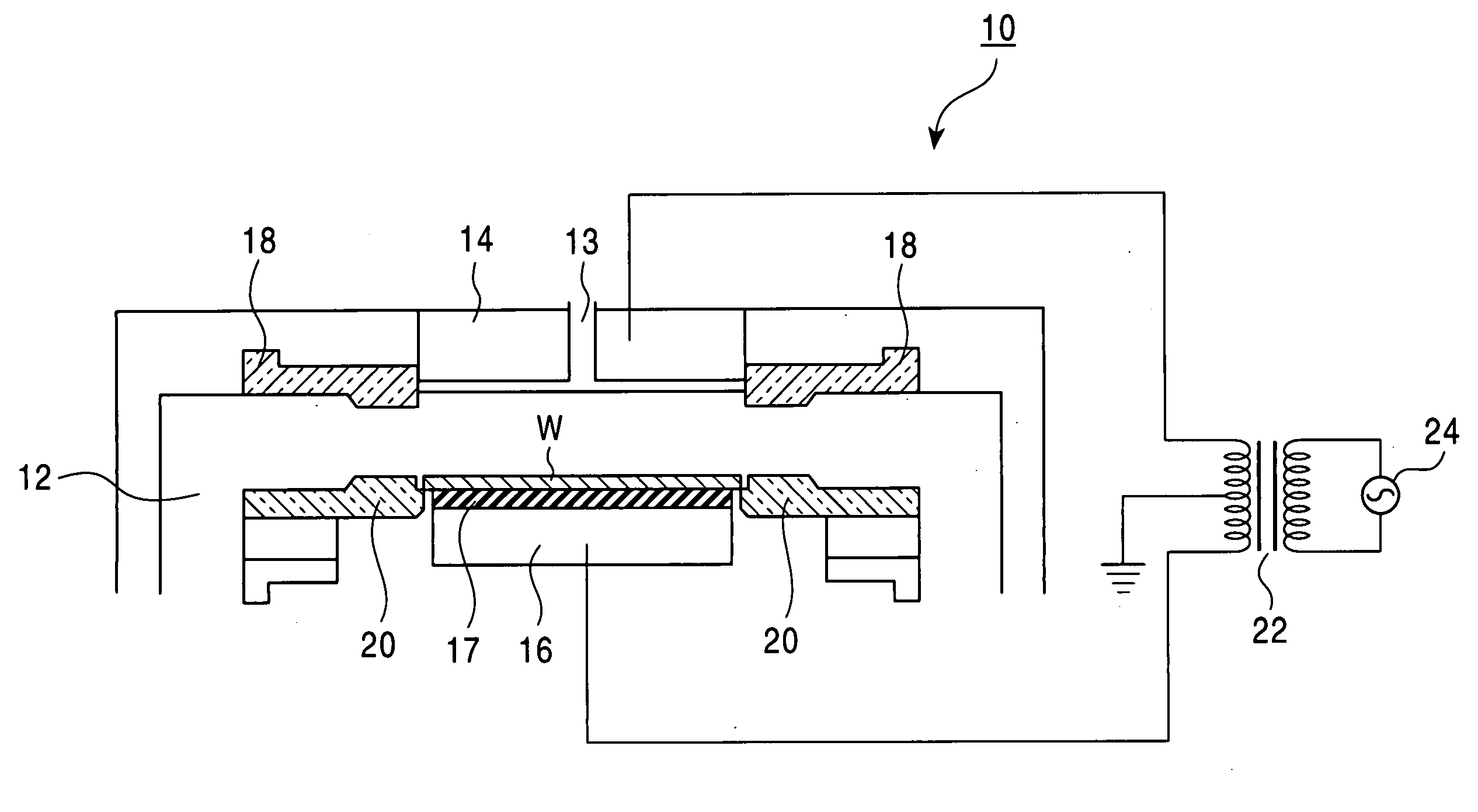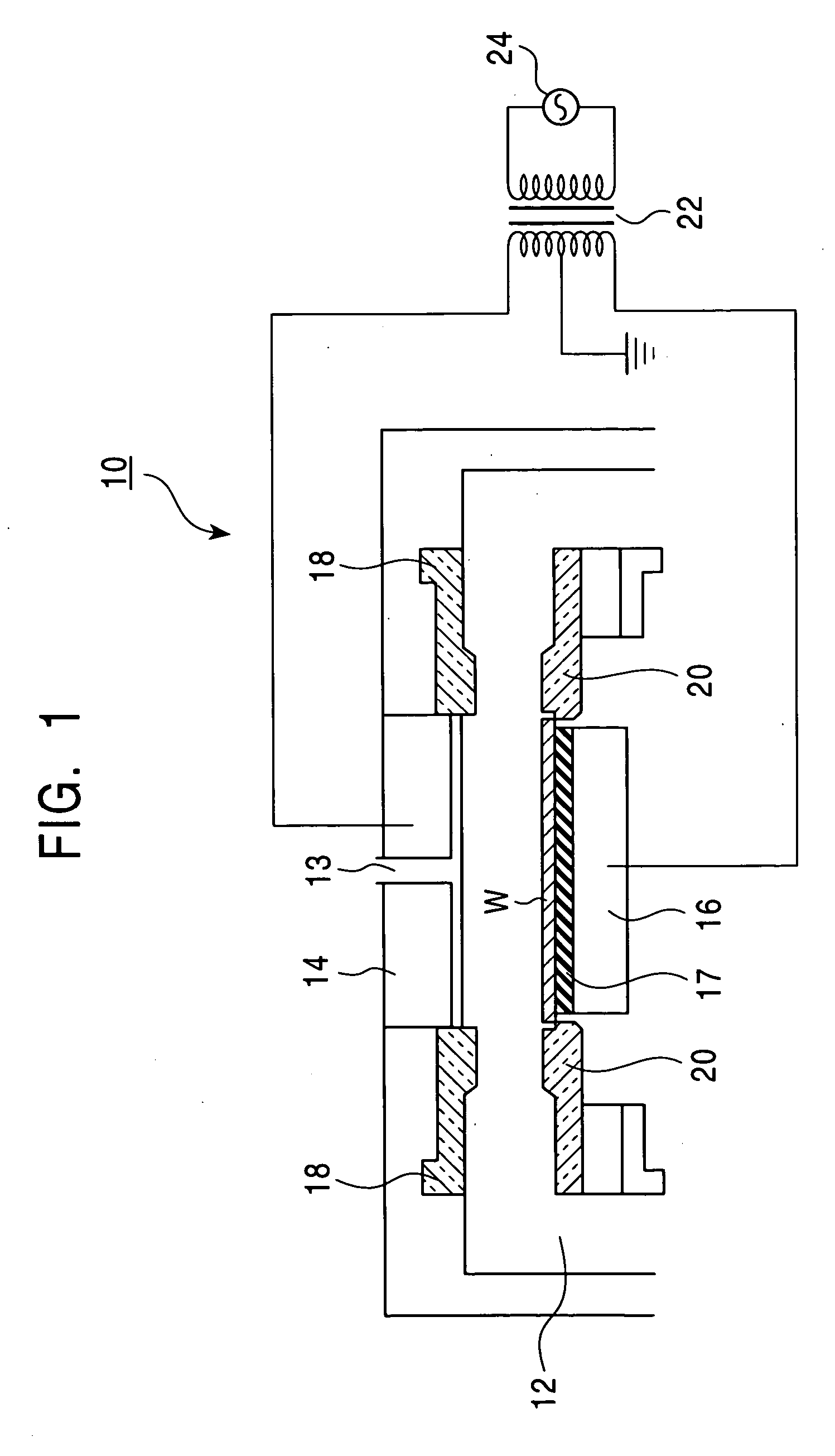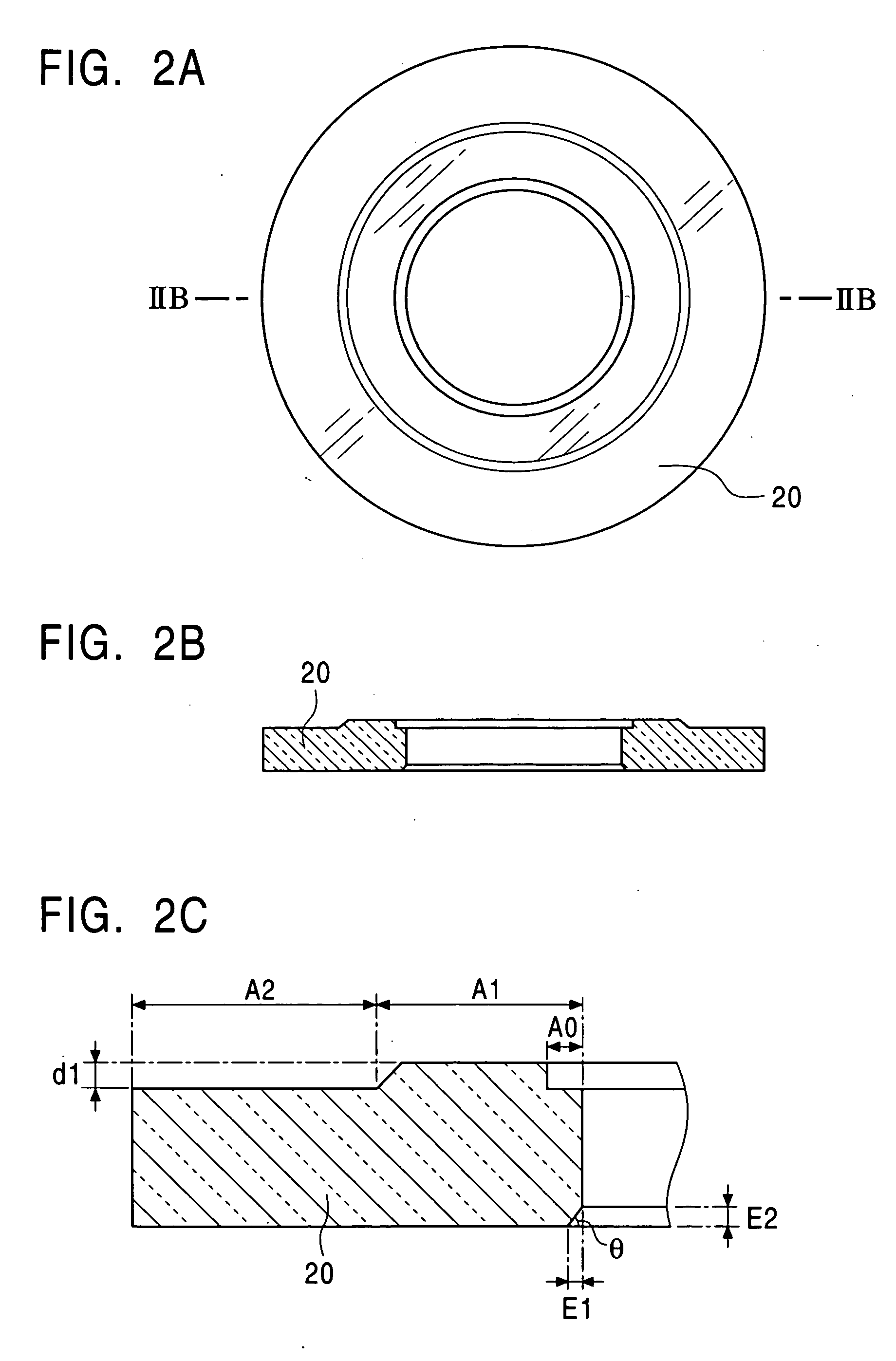Quartz component for plasma processing apparatus and restoring method thereof
a plasma processing apparatus and component technology, applied in the field of plasma processing technique, can solve the problems of plasma damage, damage to components, and inability to completely eliminate and none of the aforementioned materials can solve the problem of plasma damag
- Summary
- Abstract
- Description
- Claims
- Application Information
AI Technical Summary
Benefits of technology
Problems solved by technology
Method used
Image
Examples
first embodiment
[0034] First Embodiment
[0035] Description will be made below regarding a first exemplary embodiment according to this invention.
[0036] FIG. 1 is a schematic cross-sectional diagram of a plasma processing apparatus for performing dry etching according to an exemplary embodiment of this invention. As shown in FIG. 1, the plasma processing apparatus 10 performs etching using radio-frequency (RF) plasma. The plasma processing apparatus 10 has a parallel-plate-electrode configuration with the electrodes facing one another across a narrow gap.
[0037] The processing chamber 12 accommodates a silicon wafer W to be processed, and a vacuum of around 10.sup.-6 Torr (around 10.sup.-4 Pa) can be established. The chamber 12 includes an upper electrode 14 at the upper middle thereof and a lower electrode 16 at the lower middle thereof. The upper electrode 14 is connected to a gas inlet 13 for introducing the etching gas. The lower electrode 16 has an electrostatic chuck 17 for mounting the wafer W ...
second embodiment
[0118] Second Embodiment
[0119] Next, description will be made regarding a method for performing a cycle of use and restoration of a quartz component according to various exemplary embodiments of this invention.
[0120] FIG. 6 is a flowchart that shows a flow of a cycle of use and restoration according to various exemplary embodiments of this invention, and FIGS. 7 and 8 are longitudinal cross-sectional diagrams of a quartz component that is used during the cycle of use and restoration according to various exemplary embodiments.
[0121] According to various exemplary embodiments, the first time, a conventional focus ring having a generally flat upper surface (main surface) is used. After processing a number of wafers W, a first time restoration is performed on the focus ring such that the upper surface becomes flat for its second time use.
[0122] After processing a number of wafers W, a second restoration is performed. This time, restoration is performed so that the focus ring is formed w...
example
[0158] Description will be made below with reference to the drawings regarding the operation of an exemplary plasma processing apparatus according to this invention. The same plasma processing apparatus as shown in FIG. 1 is used.
[0159] In this example, split-coupling method for applying RF electric power to both the upper and lower electrodes was employed. In this example, as shown in FIGS. 2 and 3, quartz components (focus ring and shield ring), each having a main surface with a ridge in the shape of a circle are used.
[0160] The first region, or the ridged region, was formed with a width of 35 mm around the inner perimeter, and the main surface was divided into the first region and the second region separated in height by an offset with a height of 1 mm. Furthermore, a beveled portion having a rounded corner of 2R (2 mm in radius) is formed on the inner perimeter of the mounting surface (lower surface) of the focus ring. Dry etching is performed for a silicon-dioxide film using th...
PUM
| Property | Measurement | Unit |
|---|---|---|
| Height | aaaaa | aaaaa |
| Height | aaaaa | aaaaa |
| Height | aaaaa | aaaaa |
Abstract
Description
Claims
Application Information
 Login to View More
Login to View More - R&D
- Intellectual Property
- Life Sciences
- Materials
- Tech Scout
- Unparalleled Data Quality
- Higher Quality Content
- 60% Fewer Hallucinations
Browse by: Latest US Patents, China's latest patents, Technical Efficacy Thesaurus, Application Domain, Technology Topic, Popular Technical Reports.
© 2025 PatSnap. All rights reserved.Legal|Privacy policy|Modern Slavery Act Transparency Statement|Sitemap|About US| Contact US: help@patsnap.com



